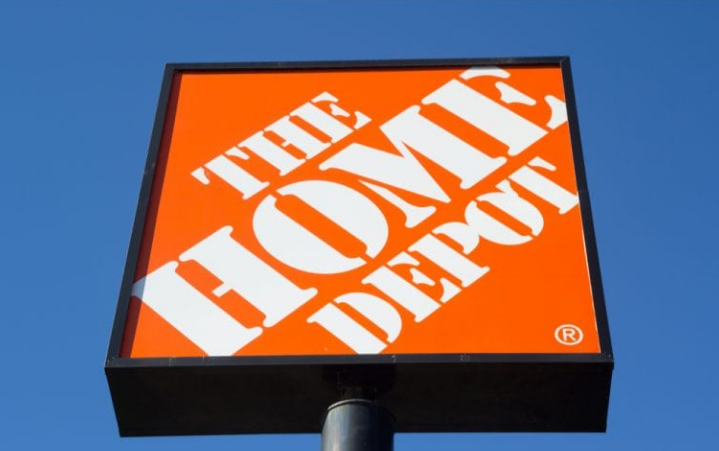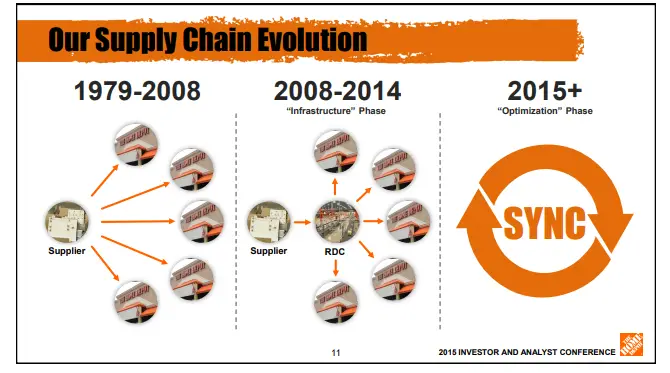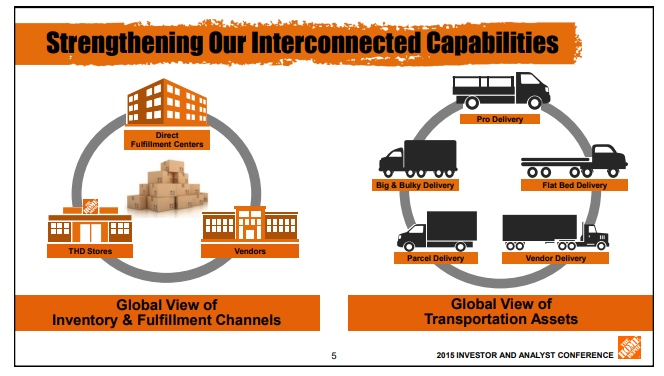The Home Depot supply chain issues are mainly labor shortages, rising inflation and interest rates as well as sustainability issues in the company’s supply chain process.
Home Depot was started in 1978 by Arthur Blank and Bernie Marcus alongside Pat Farrah and Ken Langone who were a merchandising guru and an investment banker respectively.
The brand began as a shop geared toward providing the do-it-yourselfer (DIY) with a one-stop shop where they could easily purchase all the need for their home improvement projects. The brand has, however, grown in its over 40 years of existence to cater to professional contractors as well.
The American multinational retail corporation sells various home improvement items and tools including outdoor and indoor furniture, blinds, paint, locks, brushes, furnishings, etc. They also sell home appliances and construction tools. Additionally, the brand provides rental services for trucks and vans. It also has fuel-selling pumps at some of its outlets and also sells garden products.
Since its establishment, Home Depot has sought to enter into meaningful partnerships and agreements with industry-leading home product manufacturers. This is aimed at providing the brand’s customers with the best products at the best possible prices. They also offer select installation services.
This commitment to customer satisfaction has aided the company’s expansions and thriving both within and outside the United States. Home Depot’s acquisition of Aikenhead in 1994, Total Home in 2001, and The Home Way in 2006 extended the company’s operations to Canada, Mexico, and China respectively,
According to Wikipedia, Home Depot is the 6th largest global employer with over 490,000 employees. It is also the biggest home improvement company in the world with a revenue of $157.4 billion in 2022 and over 2,300 stores. The company’s stock is a mega-cap stock with a market capitalization of 326.22 billion as of August 23, 2023.
Home Depot’s supply chain process consists primarily of sourcing and procurement of home improvement items, transporting them to the company’s distribution centers, moving them to its retail stores, and subsequently selling them to customers.
This supply chain process is not without faults, hence, we shall discuss home depot’s supply chain process as well as some supply chain issues that have negatively impacted the company.
See also: Kroger Supply Chain Issues and Management
What is supply chain at Home Depot?
The supply chain at Home Depot begins with the sourcing and procurement of different home improvement items, tools, and appliances. It continues with transporting these materials to the company’s distribution centers from where it is further transported to the brand stores from where most customers make a purchase.
The procurement is done from a robust network of product manufacturers. The distribution centers serve as a point of convergence for all the products before they get to Home Depot’s over 2,300 stores where customers can make purchases.

See also: Nestlé Supply Chain: Issues and Management
Home Depot supply chain process
- Sourcing and procurement of items
- Distribution centers and logistics
- Retail stores and customer service
Sourcing and procurement of items
Similar to other companies, Home Depot’s supply chain process begins with the sourcing of the various home improvement materials that the company sells.
This is either done through partnerships whereby Home Depot and the manufacturing company enter into an agreement as can be seen in the business relation between the brand and companies such as Ryobi tools, BEHR paint, and LG appliances.
Another way that the company gets materials is from independent and small business owners who apply to supply certain goods to Home Depot.
Through these supplier arrangements, Home Depot is able to procure a wide assortment of home improvement materials directly from industry leaders as well as start-ups at affordable rates.
The brand implements various supplier mentoring and development initiatives to aid the growth of its suppliers. They also partner with organizations that provide networking opportunities, education, certification, and opportunities for business enhancement capital for its suppliers especially those that operate small and medium-scale businesses.
Home depot suppliers
| Name of Home Depot suppliers | Material supplied |
|---|---|
| LG | Electronic appliances such as sound systems and television |
| Behr | Paint |
| Hampton Bay | Ceiling fans, lighting fixtures, and outdoor furniture |
| Cub Cadet | Outdoor furniture and furniture covers |
| Ridgid | Power tools |
| Chem-Dry | Carpet cleaning, upholstery cleaning, tile and grout services |
| Fortune Brands Home & Security (FBHS) | Home security systems, locks, plumbing, doors, kitchen and bathroom cabinets |
| Toro | Outdoor power equipment |
| Cree | Lighting |
| Stanley Black & Decker (SWK) | Household appliances |
| Plantations Patterns | Ryobi |
| Glacier Bay | Kitchen cabinets |
| SoftSpring | Carpets |
| Brown Jordan | Outdoor furniture and accessories. |
| Martha Stewart Living Omnimedia | Kitchen cabinets, carpets, outdoor furniture, and indoor organization |
| Roybi | Power tools |
| Scotts Miracle-Gro (SMG) | Lawn and garden care products |
Home Depot distribution centers
Home Depot’s distribution centers are commonly referred to as Rapid Deployment Centers (RDC). These were the first set of distribution centers set up by the company after it centralized operations and revamped its supply chain in 2008.
Before the creation of RDCs goods were directly shipped from manufacturers to the brand’s retail stores. The rapid deployment centers were established to reduce costs and improve logistics by avoiding overstocking the brand’s retail stores with items that were not in demand.

Hence, RDCs served as a hub for aggregating the various home improvement items before disseminating them to retail stores based on the demands of the store.
Every region had an RDC that caters to stores within its jurisdiction. The company has over 150 distribution centers in the areas it operates.
Home Depot logistics
Logistics is another important aspect of the Home Depot supply chain process as it enables the delivery of goods from manufacturers to the various distribution centers as well as retail stores of the brand.
Home Depot contracts about 80 third-party logistics companies to handle the company’s transportation needs. This comprises both asset carriers and carrier brokers who bid out every three years. Some of the logistics companies the brand uses include XPO Logistics, NFI, and Schneider Logistics.
Between 1979 and 2008, the home improvement goods were transported directly from the manufacturers to the Home Depot retail stores. This model was modified between 2008 to 2014 with the goods passing through the company’s Rapid Deployment Centers (RDCs) before getting to the retail stores.
Currently, the company has further modified its logistics by centralizing its supply chain process, especially the aspect of logistics. This means that goods are transported based on store requirements. Hence, some goods come directly from the manufacturers to the retail stores while some still pass through Home Depot distribution centers first.
This modification in logistics was done to reduce the amount of inventory that is kept at the stores and to ensure efficiency in meeting the needs of customers.
Retail stores and customer service
In addition to its distribution and fulfillment centers, retail stores are the last step in Home Depot’s supply chain process. They serve as a direct meeting point between the company and its customers. It serves as a convenient customer shopping, pickup, return, and delivery fulfillment location.
Home Depot stores provide individuals and contractors with over 40,000 different products that can be used for home improvement projects. The online store provides a staggeringly higher number of products with over a million products listed.
The wide variety of products that the brand sells provides customers with a broad base of products to choose from for their projects; hence allowing for product customization. Customers also have access to inventory information and the option of shopping online before coming to the store for pickup or having the product delivered to their preferred address.
Home Depot’s customer service philosophy of whatever it takes means that the brand always goes the extra mile to meet customer expectations by providing them with a wide variety of products that they need for their home improvement projects. The company also equips its associates through regular training to enable them to assist customers in making appropriate choices in line with their specific needs.
The brand has further enhanced customer service by providing online shopping platforms where customers can easily make purchases. They are also focused on reducing the time it takes from purchase to delivery by offering same-day or next-day delivery where possible.
Order fulfillment facilities
- Flatbed delivery centers
- Market delivery centers
- Market delivery operations
- Direct fulfillment centers

Apart from its retail stores, Home Depot has created fulfillment centers to aid in the final dissemination of goods to customers. These fulfillment centers cater to different products and further aid in reducing the inventory in various retail stores of the company.
Flatbed delivery centers (FDC)
These delivery centers are specialized and capable of handling most big and bulky building materials including drywall and lumber. They are built in such a way that flatbed trucks can easily drive into them, thus their sizes range between 300,000 to 800,000 square feet.
Flatbed delivery centers are commonly found along rail lines due to the heavy goods that are stored in them. Their location also aids in easier delivery of the products from manufacturers as most of these items are transported by train. Thus, this particular Home Depot delivery center lets the brand handle both train and truck products.
These delivery centers cater more to Home Depot’s professional customers such as tradespeople and contractors due to their housing large home improvement materials.
Market delivery centers (MDC)
The market delivery centers are supportive of the brand’s home improvement supply chain process while accelerating the growth and provision of maintenance, repair, and operations (MRO).
They serve as hubs that handle the local delivery of MRO products such as windows, appliances, and doors. They also cater to the delivery of fast-turning store-based products such as power tools and cleaning materials.
Market delivery operations (MDO)
These types of distribution centers are common in areas where Home Depot’s customer base is smaller; these serve as local area delivery hubs. They were created by the brand to enable its move towards providing same-day shipping and next-day delivery for its online and in-store customers.
Market delivery operations are stockless and handle large appliances such as washing machines and dishwashers. It also incorporates small cross-docks.
Direct fulfillment centers (DFC)
These are recent delivery centers that have incorporated automatization and mechanization of the warehousing process. The size of these distribution centers ranges between 750,000 to 1,600,000 square feet. The use of automation and mechanization aids these distribution centers in quickly turning around parcel orders.
The automatization further synchronizes order fulfillment activities and it also provides direct-to-consumer fulfillment and store pickup for online orders.
See also: IKEA Supply Chain Problems and Issues
How does Home Depot supply chain work?
The Home Depot supply chain works in a straightforward manner comprising procurement, distribution centers, logistics, fulfillment centers, and retail stores.
Home Depot purchases various home improvement materials from manufacturers through its procurement team. These goods are then aggregated in various regional distribution centers from where they get distributed to fulfillment centers while some others are sent to retail stores based on the orders of these stores.
At the stores, customers make their purchases for their him improvement projects. Alternatively, they can make their purchase online and have the products delivered or they could pick it up from the stores.
See also: Starbucks Supply Chain Issues and Management
Home Depot supply chain issues
- Effects of the pandemic
- Labor shortages
- Sustainability concerns
- Reduced patronage due to inflation and high interest rates
- Changing consumer behavior
Effects of the pandemic
While other businesses were negatively affected by the pandemic, Home Depot recorded a surge in demand and a consequent increase in revenue. The brand’s revenue increased from $100,904 million in 2018 to $108,203 million and $110,225 in 2019 and 2020 respectively.
The company thrived during the difficult time due to the lockdowns and the ensuing longer time people spent at home, hence affording most individuals and families the ability to make necessary changes and improvements to their living spaces.
With the pandemic, ports became congested and there were container shortages. Hence in order to meet up with the increasing demands from customers, Home Depot had to boost its supply chain.
One way the Home Depot supply chain was boosted was by the company’s contracting of its own container ship. This was a first for the company as the company’s President and Chief Operating Officer, Ted Decker stated the ship would be solely dedicated to the company to aid its supply chain meet increasing demand and navigate the problem of lack of adequate carriers.
Additional steps the company took to tackle the supply chain challenges was purchasing items on the spot market although these cost as much as four times the contracted rates. Home Depot also occasionally uses air freight to bring in electrical components, power tools, fasteners, faucets, and other smaller high-value items.
Due to these proactive measures to aid the smooth functioning of the supply chain process, the company was able to have adequate supplies to meet the surge in demand.
Although Home Depot has been using online platforms for sales, the channel became more active with the pandemic. People purchased home improvement materials online and opted to pick them up from the store or have them delivered.
However, as the pandemic eased and the lockdown gradually got lifted, Home Depot was faced with another supply chain issue which was that of dwindling patronage and an overextended supply chain.
In order to deal with these supply chain issues and maintain the brand’s position as a low-cost home improvement retailer, the company’s Executive Vice President (EVP) and Chief Financial Officer (CFO), Richard McPhail stated at an investor’s call in June 2023 that
We are built up as a result of the rampant increase and transactions during 2020 and 2021. We flexed our supply chain holding capacity up to absorb unplanned growth in 2020 and 2021. And we are now gradually reducing that holding capacity as transactions normalise.
We are actively evaluating reductions in our structure beyond product and transportation cost… we are [reducing] these costs by approximately $500m to be fully realised in fiscal 2024. These costs are most fixed in nature.
Home Depot’s EVP and CFO, Richard McPhail
Labor shortages
Another supply chain issue faced by Home Depot is the inadequate number of individuals available to work within its supply chain. This supply chain issue is not exclusive to the home improvement retailer but is a common challenge for most businesses.
The U.S. Chamber of Commerce reported on August 10, 2023, that recent data shows that there are 9.8 million job openings in the country but only 5.9 million unemployed workers.
This labor shortage has been attributed to a variety of factors including early retirement, lack of work ethic among the younger generation, low international migration to the country, and lack of access to quality and affordable child care.
The recent Covid pandemic has also been a big contributor to the labor shortage as a considerable number of workers have started their own businesses, gone back to school to further their education, or are unwilling to return to the stringent working hours without higher compensation.
In early 20202, in the bid to tackle this supply chain issue of labor shortage and fill out the over 100,000 vacancies for new associates, Home Depot began an accelerated hiring process ahead of the spring season which was usually a busy season for the retailer.
The accelerated hiring process ensured that applicants get feedback from the company within 24 hours of their application and might even get a job offer within the same period.
The process was used in hiring flexible part-time and full-time workers in the store support, sales, customer service, merchandising, freight, and warehouse segments of the Home Depot’s supply chain.
The company also offered additional perks of working for the company such as a performance-based cash-bonus program, health and personal benefits, upskilling programs, and paid family leave. They also offered back-up dependent care, a 401(k) savings plan with company match, tuition reimbursement, and a discounted company-stock purchase program.
Home Depot’s determination to attract more workers to fill out its vacancies saw the company raising its hourly rate in February 2023 to $15 per hour.
Although the labor shortage still lingers, these moves have positioned the company to better attract workers due to the incentives they offer employees.
Sustainability concerns
Home Depot’s supply chain issue includes sustainability concerns. With the increasing natural disasters such as wildfires that have been linked to global warming and the indiscriminate felling down of trees leading to deforestation, there have been concerns about how the brand sources its wood products.
For instance, in May 2022, Green Century Funds, an environmentally focused investment fund that owns about 42,000 shares of Home Depot stock along with other investors and conservationists compelled the brand to reevaluate its plywood sources following findings that their supply may be coming from mega-diverse forests affected by deforestation.
One of the company’s plywood suppliers, Endesa-Botrosa which supplies Home Depot with wood for its Sandeply was accused of being linked to violence against environmental defenders and to the deforestation of vulnerable rainforests without a sustainable management plan.
However, a spokesperson for the plywood supplier debunked the allegations and emphasized the company’s commitment to implementing a sustainability plan in all of their forest operations.
Reduced patronage due to inflation and high-interest rates
Economic downturns have led to an increase in inflation globally, it has also led to a corresponding increase in interest rates by the Federal Reserve in the bid to curtail the inflation. Statista puts the inflation as of July 2023 at 3.2% while interest rates were between 5.25% to 5.5%.
These twin issues have negatively affected Home Depot’s supply chain. For instance, from the beginning of 2023 until August, retailers have seen a decline in their sales. The home improvement retailer has also faced the same challenge due to Americans reducing their spending on home remodeling.
Individuals are more weary of their spending as well as obtaining loans. Therefore, the demand for discretionary items like appliances, patio furniture, grills, baths, flooring, and kitchen equipment has continued to decline.
As a result of this decline, Home Depot’s net income for the three-month period ending on July 30, 2023, was reported as $4.7 billion which is lower than the previous year’s net income of $5.2 billion for the same three-month period. There was also a 2% decline in the company’s second-quarter sales for 2023 compared to the second quarter of fiscal year 2022.
Despite this dwindling revenue, the brand still has a bright prospect as it was able to beat Wall Street’s prediction based on a survey of analysts by Refinitiv that the company’s revenue for the second quarter of 2023 will be $42.23 billion while Home Depot actually racked in $42.92 billion.
Changing consumer behavior
The rapid advancement of technology driven by the digital revolution, the pandemic as well the increasing drive toward convenience and ease of shopping have also affected Home Depot’s supply chain.
For instance, the company had to expand its supply chain by including variations of fulfillment centers in order to better meet the demands of consumers.

The company’s utilization of online platforms, as well as mobile apps, meet consumers’ needs for convenience and the ability to shop without having to visit the store physically.
Additional ways that the company has enhanced its supply chain to tackle changing customer preferences is by including different freight options for customers based on their orders.
See also: McDonald’s Supply Chain Issues and Process
Conclusion
Home Depot has been faced with some issues in its supply chain process including changing customer preferences, inflation, and labor shortages. Despite these challenges, the company has not rested on its oars as it continues to revamp its supply chain and bring about innovative changes that tackle its supply chain issues while enhancing its processes and meeting consumer demands.
Hence, Home Depot maintained its position as the leading home improvement retailer by providing affordable home improvement materials as well as swift and dependable delivery through all avenues and for all merchandise.
See also: Nike’s Supply Chain Issues and Management
Last Updated on November 2, 2023 by Nansel Nanzip BongdapBlessing's experience lies in business, finance, literature, and marketing. She enjoys writing or editing in these fields, reflecting her experiences and expertise in all the content that she writes.

